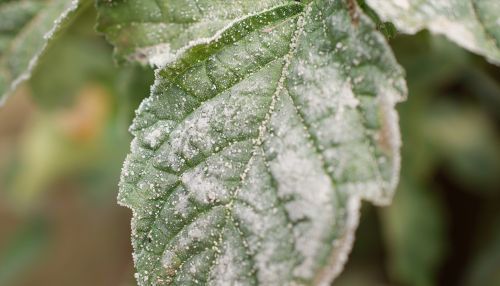Powdery mildew
Introduction
Powdery mildew is a common disease affecting a wide range of plants, caused by many different species of fungi in the order Erysiphales. It is characterized by spots or patches of white to grayish, talcum-powder-like growth. This disease is most frequently observed on the upper surfaces of the leaves, although it can also significantly affect the bottom of the leaves, stems, flowers, buds, and fruits.


Causes and Development
Powdery mildew fungi can be quite specialized, and each species can infect only a few, closely related host plants. Therefore, the powdery mildew on your roses will not spread to your grapes or your pumpkins. This specialization has resulted from coevolution with their host plants over millions of years.
The development of powdery mildew is influenced by many factors, including the host plant, the specific pathogen, and environmental conditions. The fungi that cause powdery mildew require living plant tissue to grow. Unlike many other fungal pathogens, powdery mildew fungi tend to grow on the plant surface and send feeding structures called haustoria into the cells to extract nutrients.
Symptoms and Diagnosis
The most obvious sign of powdery mildew is the distinctive white to gray powdery spots or patches that develop on the leaves, stems, and sometimes fruit. These spots gradually expand into large blotches. Under severe conditions, the powdery mildew may cover the entire leaf surface and lead to early leaf drop.
Diagnosis of powdery mildew is usually straightforward due to the distinctive symptoms. However, in some cases, laboratory tests may be necessary to confirm the diagnosis and identify the specific pathogen. These tests typically involve microscopic examination of the fungal structures or molecular techniques such as PCR.
Management and Control
Management of powdery mildew involves a combination of cultural practices, biological control, and chemical control. Cultural practices include selecting resistant varieties, proper spacing of plants for good air circulation, and avoiding overhead watering. Biological control involves the use of beneficial organisms such as certain types of fungi and bacteria that can suppress the powdery mildew. Chemical control includes the use of fungicides.
Cultural Practices
Cultural practices can significantly reduce the incidence of powdery mildew. These practices aim to create an environment that is less favorable for the development of the disease. For instance, selecting resistant varieties when available can be a very effective way to manage powdery mildew. Proper spacing of plants can also help by improving air circulation and reducing humidity around the plant surfaces. Avoiding overhead watering can prevent the creation of a moist environment that favors the development of the disease.
Biological Control
Biological control of powdery mildew involves the use of beneficial organisms that can suppress the disease. These beneficial organisms can be naturally occurring or introduced. They work by outcompeting the powdery mildew for resources, directly parasitizing the powdery mildew, or producing substances that inhibit the growth of the powdery mildew. Examples of beneficial organisms used for the control of powdery mildew include certain types of fungi such as Ampelomyces quisqualis and bacteria such as Bacillus subtilis.
Chemical Control
Chemical control of powdery mildew involves the use of fungicides. These can be contact fungicides that kill the fungus on contact, or systemic fungicides that are absorbed by the plant and can kill the fungus inside the plant. Fungicides should be used as part of an integrated pest management program and should be applied according to the manufacturer's instructions to minimize the risk of developing fungicide resistance.
Economic and Environmental Impact
Powdery mildew can have significant economic impact, particularly in agricultural settings. It can reduce crop yield and quality, leading to financial losses. In addition, the cost of managing the disease can be substantial. The environmental impact of powdery mildew is generally less direct but can include the effects of fungicide use on non-target organisms and the environment.
